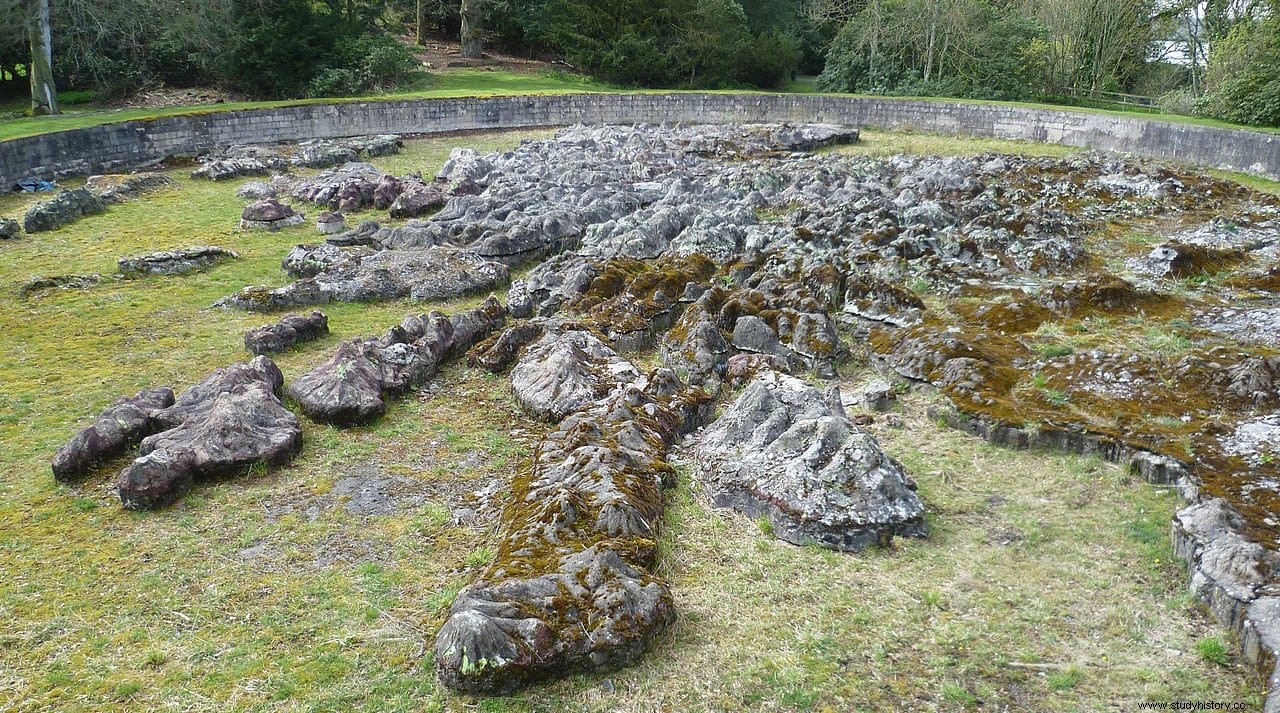What is the largest relief map of the world ? It seems that such a distinction corresponds to the so-called The Great Polish Map of Scotland , a gigantic model of 50 meters long by 40 wide that is located on the grounds of Barony Castle, on the outskirts of Eddleston, near Peebles, in the heart of Scotland . With such a size and taking into account that it is made of concrete, it has no choice but to expose itself to the open air , next to the castle that gives the place its name.
Anyone who speaks some broken English will have noticed another oddity and that is Polish , which means Polish. The reason is that, in 1942, the building was used as a training center for Polish Army officers exiled in Great Britain after the invasion of their country by Germany but eager to collaborate with their allies in the Second World War . These men joined the First Polish Corps and had as their mission the defense of the Scottish east coast against a possible invasion from Norway, which had been occupied by the enemy.
In this sense, the Poles dedicated themselves to installing anti-tank obstacles on the beaches and patrolling the coast in armored trains until 1944, under the command of General Stanisław Maczek , joined the troops that landed in Normandy. After the conflict, when Poland remained on the Soviet side, many of those soldiers preferred to return to Great Britain and most of them stayed in the Scotland they already knew.

The map was the idea of Jan Tomasik , a sergeant from Krakow who had been stationed at Galashields, a few miles from the castle, during the war, and was married to the nurse who treated him at the local hospital for his injuries. Tomasik successfully dedicated himself to the hotel business and even bought the castle in 1968 to dedicate it to that activity. It is not known how or under what circumstances he got the idea to make the map, except that in 1940 he and others had created a smaller one at the Lanarkshire camp for military reasons and that, in 1958, Tomasik had seen with amazement a great diorama of Belgium at the Brussels International Exhibition.
Perhaps then he decided that he could be one more attraction for the castle and, incidentally, pay homage to that adopted country for which he had given his blood; a “gift to the people of Scotland” , in his own words. In fact, he was even planning to invite the Queen to the opening. Tomasik contacted several comrades-in-arms and hired Polish professionals for the realization of the project. Despite the Cold War, there was no problem for Scotland and Poland to collaborate (even exchange students traveled to participate) and, thus, it was the cartographer Kazimierz Trafas the person in charge of making the design, on the recommendation of the prestigious geographer Mieczysław Klimaszewski.
The works occupied six consecutive summers between 1974 and 1979, although most of it was concentrated in 1976. Trafas marked an oval contour with a perimeter of 142 meters at a scale of 1:10,000 , occupying a total of 1,590 square meters . To make the main island and the neighboring archipelagos in three dimensions, the technique of vertical formwork was used. , subsequently carving the topographical reliefs by hand using military maps as a reference. Forests, urban areas, roads and lakes were then painted over. Some of the latter are made of real water , brought from nearby rivers by a system of pipes that work by the law of gravity. The planned catwalk was never placed. above the map, which would allow it to be viewed from above.
In 1985 the Great Polish Map of Scotland fell into a state of abandonment when closing the hotel. The inclement weather and lack of care spoiled it, losing the paint and being covered with vegetation. Tomasik died in 1991, so it had to be his designer, Kazimierz Trafas, who in 1994 began a campaign to save and rehabilitate him . Trofas died in 2004 but thanks to his efforts and that of many volunteers, the unusual map could be revisited in all its splendor six years later.
More information:Barony Castle
